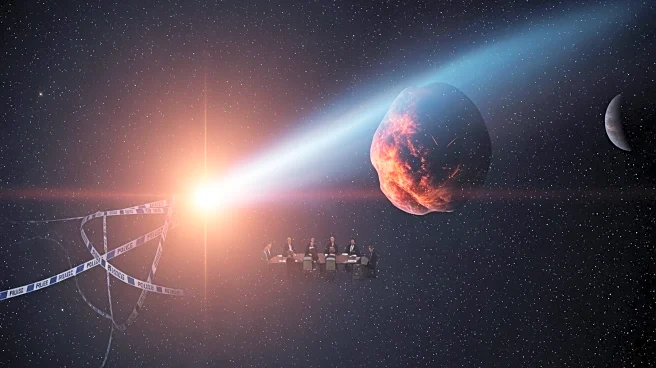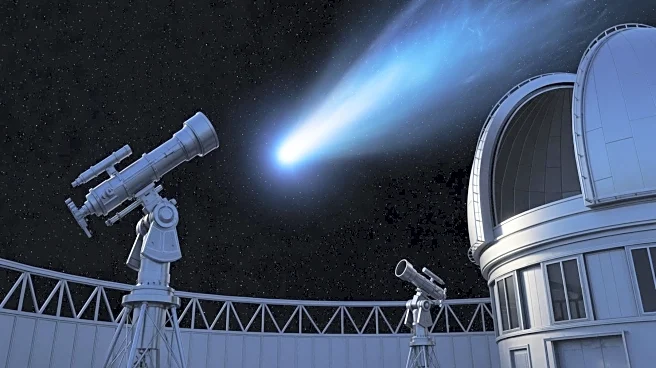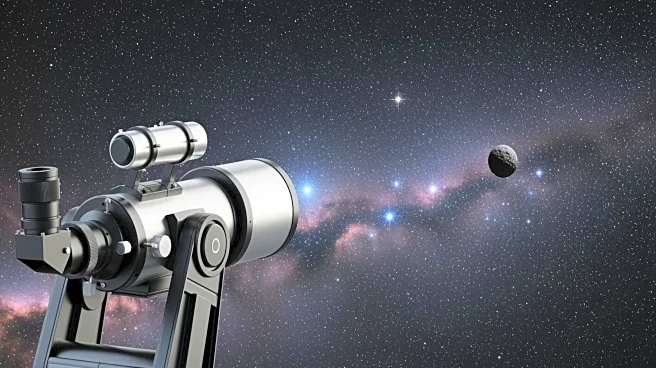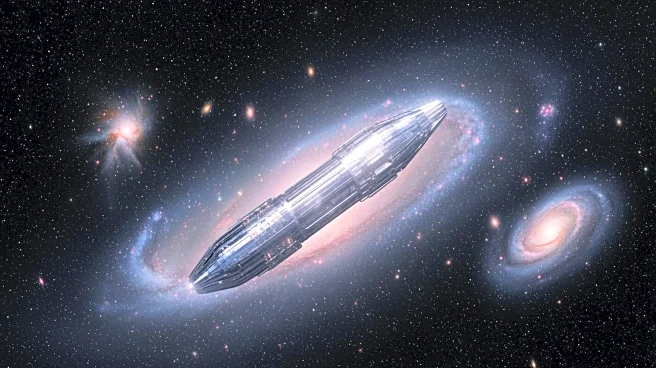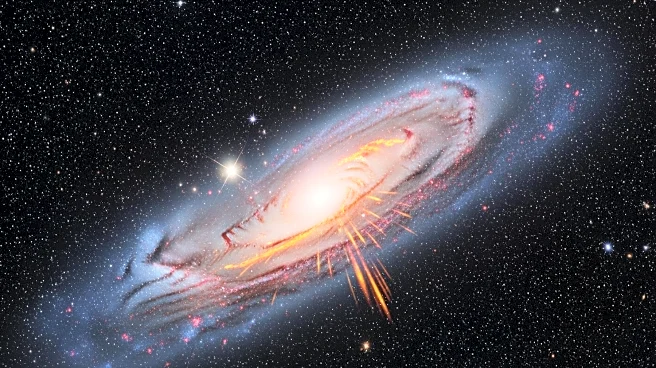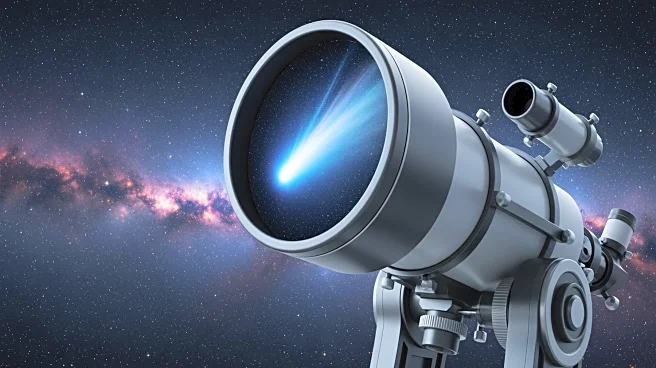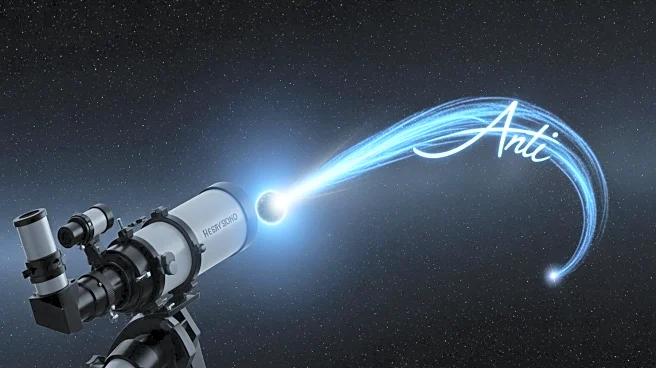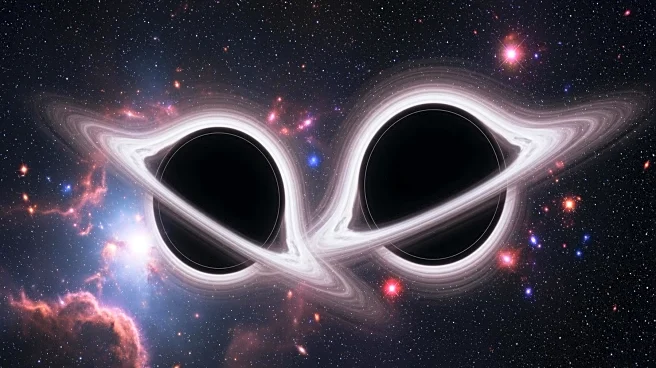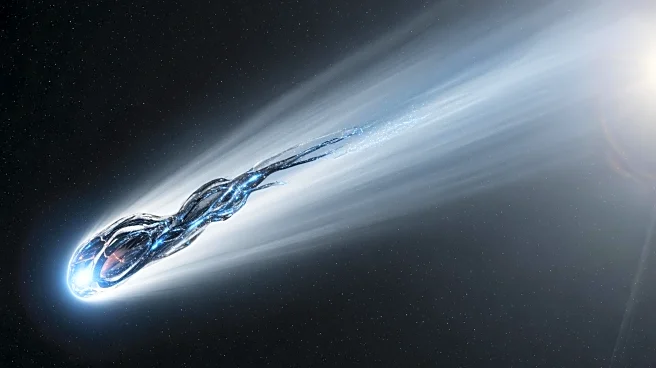What's Happening?
New images from the Two-meter Twin Telescope at the Teide Observatory reveal that the interstellar comet 3I/ATLAS is emitting a large jet of gas and dust toward the sun. This behavior is typical for comets
as they approach the sun, causing their icy surfaces to sublimate and release material. 3I/ATLAS, discovered in June 2025, is the third interstellar object detected and is notable for its size and age, potentially dating back billions of years. The images show a fan-shaped jet, confirming the comet's natural origins despite some speculative claims of it being an alien spacecraft.
Why It's Important?
The observation of 3I/ATLAS provides valuable insights into the behavior of interstellar objects and their interactions with the solar environment. Understanding these phenomena can enhance our knowledge of cometary physics and the conditions of the early solar system. The comet's natural behavior, as evidenced by the jet, supports the scientific consensus that it is not an artificial object. This discovery contributes to the broader study of interstellar visitors and their potential to inform us about the universe beyond our solar system.
What's Next?
As 3I/ATLAS continues its journey, astronomers will have the opportunity to study its changes post-solar encounter when it becomes visible again in mid-November. Future observations will focus on the comet's composition and the evolution of its jet and tail. These studies will help refine models of cometary activity and improve predictions of interstellar object behavior. The continued monitoring of 3I/ATLAS will provide further data to compare with other interstellar comets like 'Oumuamua and Borisov.
